
Which agapanthus to plant according to your region?
Some are frost-sensitive: choose agapanthus according to your climate.
Contents
Since the late 17th century, when they were brought from South Africa, Agapanthus have established themselves in gardens with a mild climate. It must be said that these tall stems bursting with flowers like fireworks are a true spectacle in borders. Since then, horticulturists have selected and developed numerous varieties, and today there is a plethora of varied agapanthuses, with blue, mauve, or white flowers. The foliage can be evergreen or deciduous, and the soft strap-like leaves can form generous tall clumps or, conversely, small fine tufts. While they share many traits, not all are equally resistant to cold or drought. Depending on the region where you wish to plant them and the style you prefer, we help you choose those that will meet your gardening desires.

→ To successfully grow your agapanthuses, please also consult our sheet: “Agapanthus: to plant, to grow, and to care for”
You live in the Mediterranean region.
To the lucky gardeners enjoying a mild climate, choosing agapanthus for the garden is made easier as winters in the south are mild and frosts are exceptional. Throughout the year, sunlight is generous, and summers are very hot and dry. All climatic conditions are therefore met to grow agapanthus in open ground, provided they are watered regularly. The ones we offer here can withstand negative temperatures of around -5°C, as light frosts are always possible. And of course, these lovely perennials will need to be planted in well-draining soil to help them get through these potential cold periods more easily.
Among the evergreen to semi-evergreen varieties, you can choose the incomparable Agapanthus africanus (or umbellatus) ‘Albus’, which bears large pure white umbels on tall stems of 1 m, or the Agapanthus ‘Enigma’, a bicolour curiosity in white and blue, reaching 50 cm. The variety ‘Strawberry Ice’ will have a special place, with its lovely large white flowers edged in light pink. The Agapanthus ‘Pitchoune Blue’ will have a more compact habit, making it suitable for use at the edge of borders alongside other perennials, just like the variety ‘Pitchoune White’, its white counterpart. These smaller varieties are also ideal in windy situations, as the stems of the larger ones tend to break under the influence of the Mistral or Tramontane winds.
Among the deciduous varieties, we can mention the hybrid ‘Blue Jeans’, which will add a strong splash of colour to borders to enhance perennials or shrubs with grey foliage. In contrast, the Agapanthus ‘Docteur Brouwer’ has lovely light mauve flowers striped with violet.
Agapanthus are perennials that generally prefer rich soil but also fear wet soils in winter, especially the deciduous varieties. Good drainage is therefore essential, and watering during the growth period promotes their development and upcoming flowering.
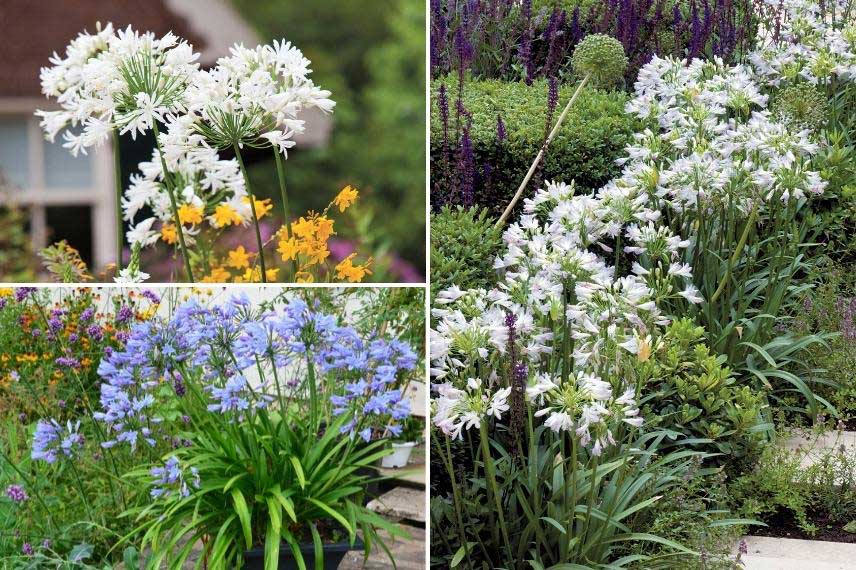
Agapanthus africanus ‘Albus’, Agapanthus ‘Enigma’ on the right, and Agapanthus ‘Pitchoune Blue’ below
Read also
Agapanthus: planting, growing and careYou live in a maritime climate.
Cold days are rare in these regions, and winters are quite rainy. Summers are warm but also a bit humid. However, temperatures rarely drop to –10 °C. In these climates, your choice of evergreen agapanthus can include the variety ‘Blue Heaven’, a large perennial with striking blue flowers, or for something more original, the hybrid ‘Fireworks’, which is more compact and features numerous bicoloured blue and white trumpets. We also have Agapanthus ‘Megan’s Mauve’, which has a lighter mauve colour that is rarer among these perennials.
Among the deciduous varieties, the Agapanthus ‘Golden Drop’, very compact, is truly charming and bright with its fine cream-variegated foliage. For a unique touch, the Agapanthus inapertus ‘Graskop’ stands out with its dark, almost black bells that turn dark blue. They droop down from tall stems of 80 cm. For a more classic version, with truly lush foliage and large blue umbels, the Agapanthus ‘Blue Giant’ will surely delight you!
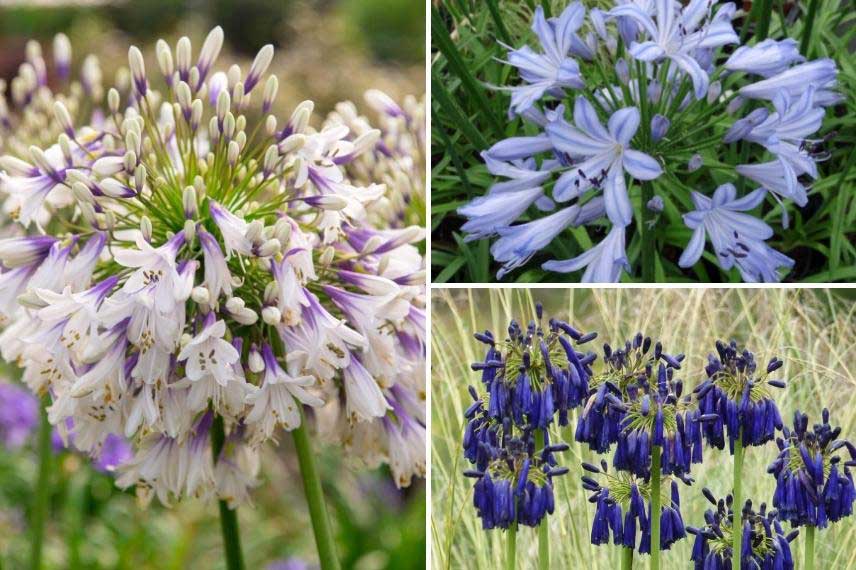
Agapanthus hybrid ‘Fireworks’, Agapanthus ‘Blue Heaven’ and Agapanthus inapertus ‘Graskop’
Discover other Agapanthus
View all →Available in 0 sizes
Available in 2 sizes
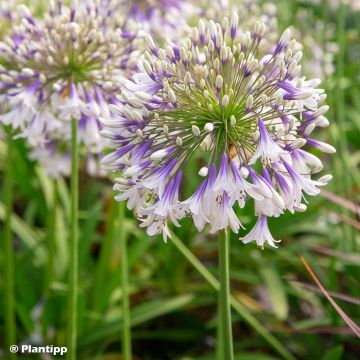
Available in 2 sizes
Available in 1 sizes
Available in 0 sizes
Available in 0 sizes
Available in 5 sizes
Available in 2 sizes
Available in 2 sizes
Available in 2 sizes
You live in a continental climate.
Are your seasons more pronounced, with hot summers but also winters that can be really cold? Rest assured, some agapanthus are made for you. Some of them can withstand -15°C in winter, provided they are planted in well-drained soil.
If your preference leans towards an evergreen for the ornamental aspect of graphic leaf masses all year round, you can plant the Agapanthus ‘Back in Black’, a very dark blue collection variety that forms a large mass of dark green foliage from July to September.
The choice expands a bit with deciduous varieties, which are more cold-resistant: ‘Flower of Love’, stocky and floriferous, with deep blue umbels, ‘Graphite White’ with large, slightly pinkish white flowers, or ‘Headbourne Blue’, the most cold-resistant, with its clumps of light green foliage and bright blue umbels.
Sophie’s little tip: If you are in a continental climate and fear an unusual drop in temperatures, consider mulching your agapanthus to effectively protect their stump from the cold. If the soil is well-drained, they will regrow from the base in the warmer days.
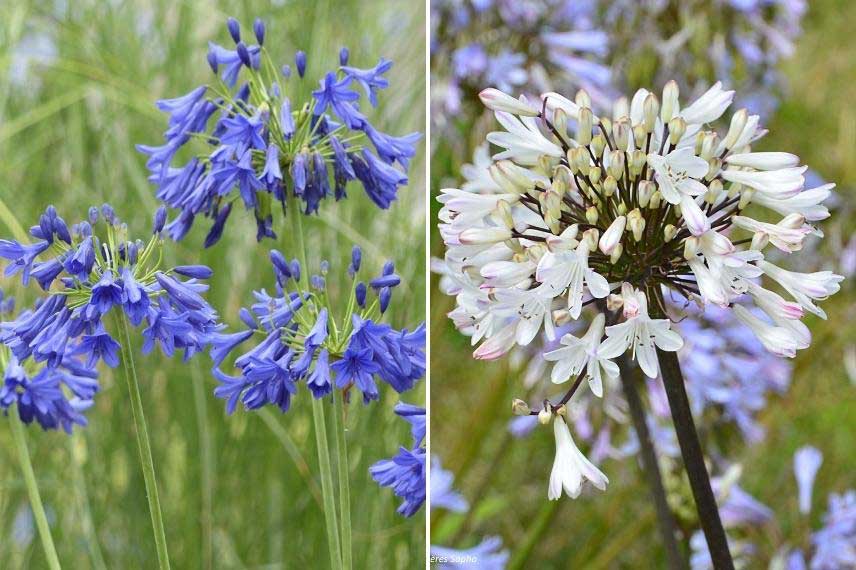
Agapanthus ‘Flower of Love’ and Agapanthus ‘Graphite White’
Read also
Agapanthus: how to plant themEverywhere else
Despite good cold adaptability for some varieties, agapanthus are still perennials that prefer mild climates. If you want to plant varieties unsuitable for your climate, simply plant them in pots. They will thrive even more if you provide them with generous watering. In winter, you can bring them into a cold greenhouse, conservatory, or any unheated room to protect them from the harshness of winter.

Agapanthus ‘Blue Heaven’ and Agapanthus africanus ‘Albus’ in pots
- Subscribe!
- Contents

































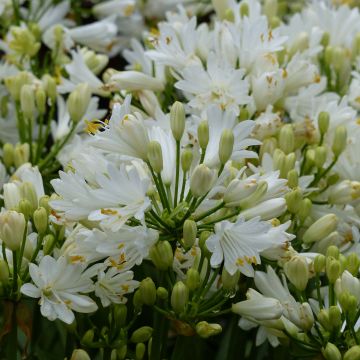
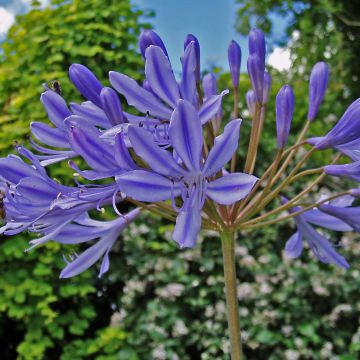
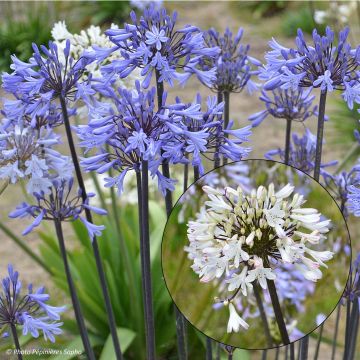
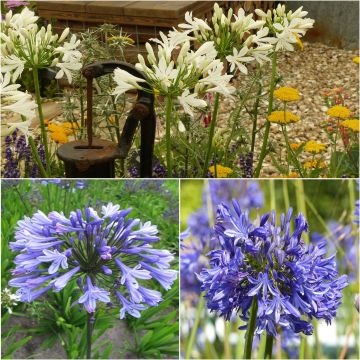
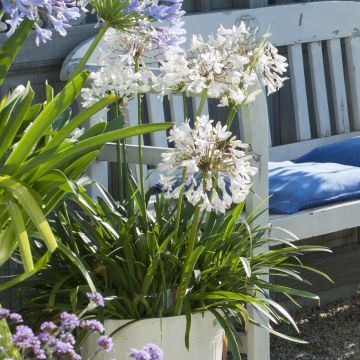
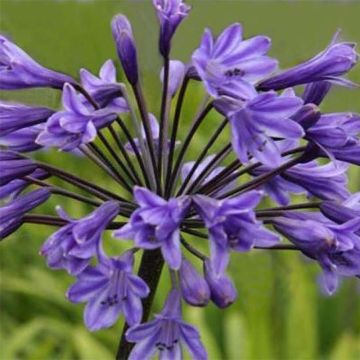
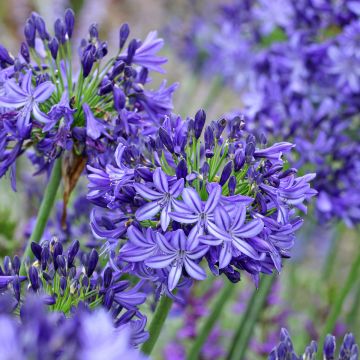

Comments